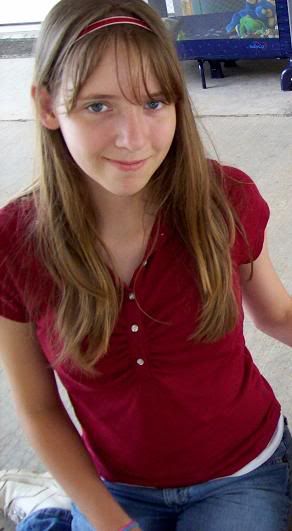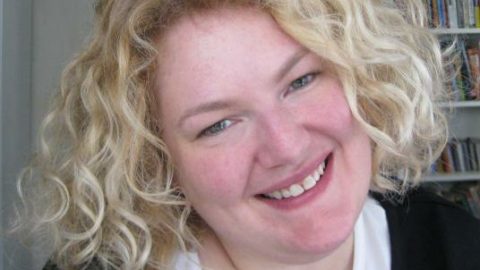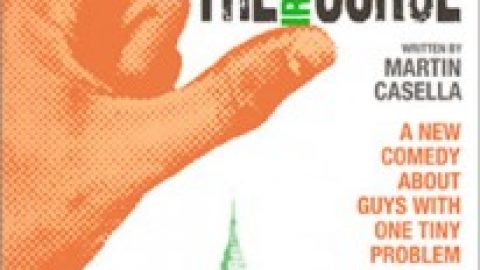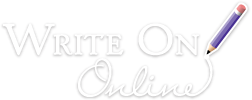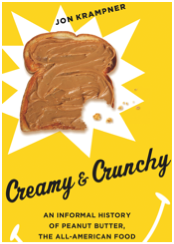 Today’s Q&A is with with Jon Krampner, author of Creamy and Crunchy: An Informal History of Peanut Butter, the All-American Food. Krampner shares his background writing non-fiction, talks about his process writing and getting his book published, offers valuable advice for writing and researching non-fiction, and more.
Today’s Q&A is with with Jon Krampner, author of Creamy and Crunchy: An Informal History of Peanut Butter, the All-American Food. Krampner shares his background writing non-fiction, talks about his process writing and getting his book published, offers valuable advice for writing and researching non-fiction, and more.
What inspired you to first start writing?
I couldn’t think of anything else I wanted to do, I suppose. I published a short story (it was about one paragraph long, so I do mean short) in my school newspaper when I was in the first grade. I helped a friend put out an underground newspaper in junior high school. Professionally, I spent the Carter administration getting fired from small-town newspapers across the West, came to Los Angeles in 1980, spent six years in public information at USC, then left to freelance.
Why peanut butter?
My first two books were biographies of tormented geniuses in the arts who lapsed into obscurity because of drinking problems. The first, The Man in the Shadows: Fred Coe and the Golden Age of Television, was published by Rutgers University Press in 1997. The second, Female Brando: The Legend of Kim Stanley, was published by Backstage Books/Watson-Guptill, in 2006.
I wanted to write about something more cheerful this time, and on a more popular subject: my first book sold 1,000 copies, my second, 3,000. I kept thinking, “What if I could actually get royalties?”
Over the last 10 to 20 years, pop-culture histories of foods have emerged as a genre: Mark Kurlansky has written Cod, Salt and Oysters; Steve Almond’s Candyfreak is a funny and nostalgic tour of mom-and-pop candy companies just before they get put out of business by Mars and Nestle. Going further back, there’s John McPhee’s Oranges. No one had done peanut butter and I loved the stuff as a kid, so I jumped in.
What was your process for writing “Creamy and Crunchy”?
I did three years of research before I wrote a word. I couldn’t figure out how to organize the material, which was growing into a mountain of paper I feared would tumble over and crush me. I contacted Mark Glubke, the editor on my Kim Stanley book, to ask if he’d meet with me the next time I was in New York and help me figure out how to organize it. He generously agreed, although in my desperation I failed to realize that I knew the material much better than he did and there was no way he could help me organize it. However, once he agreed to try, I said, “I’ve got to write something to show him.” That turned into Chapter 16, and once I had written it, the other chapters crystallized around it.
Getting it published?
I worked on the book for five years at my own expense with no guarantee of getting published before I began to look for a publisher. This is not how you’re supposed to do it, but I had a good reason: I had no background in food writing. When I started, I had no contacts, no credentials, and no knowledge of the subject, so I couldn’t have written a book proposal.
Once the project was under control, I approached people I knew. The buyer at an independent bookstore suggested Chronicle Books (They never responded to my book proposal: Thanks, guys.) My friend, Julia Child biographer Noel Riley Fitch, said Columbia University Press and University of California Press were the best university presses for food books. I contacted the University of Georgia Press because Georgia is the Number 1 peanut-growing state, and Algonquin Books of Chapel Hill, because it’s one of the best independent commercial presses you can approach without an agent. Columbia came through.
What was your favorite part of writing it? The greatest challenge?
Again, the greatest challenges were how to get up to speed in a field where I knew nothing and then how to organize the material. As punishing as biography is, structuring it is a snap. There are three parts: before the person was famous, when they were famous, and after they were famous. You can’t take a purely chronological approach to pop-culture history or it winds up reading like an industry tract: “This was the state of the peanut butter industry in the ’30’s…in the ’40’s…in the ’50’s…” I used a combined chronological and thematic approach: for example, Peter Pan was supposedly the first hydrogenated peanut butter, so in the first Peter Pan chapter, I did my aria on hydrogenation, the most important development in the history of the peanut butter industry.
My favorite part of writing it was the chapter about Deaf Smith peanut butter, a cult favorite from the ’70’s, which I discovered as a grad student in journalism at the University of Wisconsin. Although I didn’t realize it at the time, it was the first organic peanut butter as well as the first made with Valencias (known as the Vidalia onions of peanuts), and it triggered a revival of old-fashioned or natural peanut butter. Frank Ford, the man who created it, was a paradox: a crew-cut military veteran active in Campus Crusade for Christ, he was also a political activist who ended an interview by telling me to “Keep on truckin’.”
In what ways is your writing process for this book similar to/different than your previous books?
Well, I didn’t make any visits to the library of the Academy of Motion Picture Arts and Sciences, for one thing. I foolishly got into this thinking a pop-culture history of peanut butter would be easier than biography. But in addition to delving into peanut butter history and production, I had to learn about agriculture, botany, nutrition, geology, organic chemistry, food contamination, allergies, patents and trademarks, anti-trust law, the history of the American South, advertising, industrial designs, statistics and the federal rule-making process. And I still had to do biographical profiles anyway.
What was your research process? Any tips for others doing a heavily researched book?
My approach is that of Ohio State coach Woody Hayes: Three yards and a cloud of dust. Become friends with research librarians. Troll the internet. Interview anyone with knowledge of the subject who will talk to you. Write it all up and publish it. See how easy it is?
Are there any specific parameters for writing about food/in the food industry?
Talk to people in the food industry and get their point of view, but also talk to critics of the food industry to get their point of view, as well.
Additional tips for non-fiction writers?
Find a subject you care deeply enough about to work on for several years. Check to make sure no one’s already done it. (Some people can cheerfully write the 107th book about Frank Sinatra, but I’m not one of them.) Then cry “Kowabunga!” and go for it.
What do you know now that you wish you had known at the beginning of your career?
Editors and agents sometimes put their own interests ahead of yours, so choose your dance partners carefully.
What’s next? Jelly? (Sorry, had to ask …)
Nope, no more food books for moi. I’ve turned into a genre-hopper and, being a political activist, my next book will be about politics, specifically, a series of biographical profiles of people who stood up to Cheney and Bush, most of whom paid a career price for doing so.

